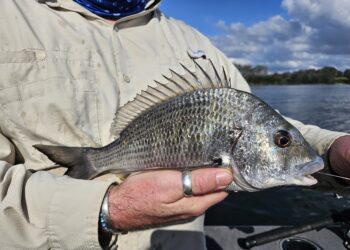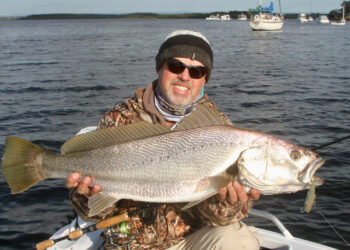IT would have been about 1975 when I used ganged hooks for the first time. I’d followed some mates into a secluded section of coast in the hope of tangling with monster tailor, a mulloway or a snapper. The sun was setting when we all congregated on a very low, swell kissed rock and cast out. I would have been using a 12 ft rod and my first Alvey side cast to throw an unweighted pilchard rigged on a set of four 4/0 hooks joined together to form a “gang” of hooks. The idea was to cast behind a ridge of reef about 15m from our posse, let the bait sink and then try to get a hooked fish back over the top of the reef and into deeper water. Because one of the guys had caught a genuine 7 kg+ tailor the night before, I was pumped. I was new to tailor fishing with a rig like this and was just commented to my mate about the tap-tap bites I was getting when the rod doubled over and the spool of the Alvey was torn from my fingers. It was exhilarating and I was a little panicked with the thought of having to drag such a big fish over shallow reef, but I managed it … only to wash out a 2 kg tailor that was foul-hooked. Hence the fight. A big fish wasn’t caught that night, but we all managed a couple of good tailor and from that point on, I was hooked on gangs.
Since that humble start, made more humiliating by the jibes made because I’d yelled that I had a monster, I’ve managed to apply the gang of hooks technique to a wide range of my bait fishing. I ended up becoming confident with tailor and even managed the odd quality by-catch. A mulloway or two, several snapper and lots of mackerel have come my way with this neat setup. I don’t use bait much these days except for mackerel and during family outings on the Great Barrier Reef, but when I do, ganged hooks are often involved.
Most recently, I’ve been fishing with folks who need a hand, so bait fishing is the way to go, and after unsuccessfully attempting to teach about waiting before striking at bite, the use of ganged hooks has tripled our success rate! As an example, I’d been fishing with a young guy during the morning and he’d caught a couple of decent bream and a flatty before we hit the fish and chip shop for lunch, which we ate beside the river. With his last chip down the hatch, he cast out an unweighted whitebait rigged on gang of three hooks and before long was screaming for help. It was an entertaining fight until I got a glimpse of a 1kg plus bream fighting against the rock wall. It was a tad stressful until I was able to scoop his prize out onto the bank. Seeing the smile on the kid’s face was a reward in itself. There was no way that bream was going back, and from all reports, Dad wasn’t allowed to eat it. Rather, the fish was brought out of the fridge and proudly displayed to neighbours and visitors until it mysteriously disappeared … along with an over-powering aroma that assaulted the nasal passages of all who opened the fridge to that point.
Simply put, a gang of hooks is two or more hooks that have been joined together by connecting the gape of the forward hook to the eye of the following hook. Typically, hooks are joined by opening the eye of the following hook and closing it after it has been slipped onto the shank of the forward hook (by passing it over the point and then barb of the forward hook). Alternatively, hooks can be joined with a swivel (one end on the shank of the forward hook and the other through the eye of the following hook). The sequence is repeated to create a gang of the desired number of hooks, with gangs made from 2 – 4 hooks being the most popular. The target species and baits used determine the number of hooks in a gang and the size of the hooks used. Ganged hooks are perfect for whole dead fish baits and long thin baits such as fish strips, worms or octopus’ leg. Particularly if the target species are aggressive feeders. They are probably not the best option for timid feeders that might spend time mouthing baits before they commit because ganged hooks must be easier for a fish to detect than a single hook concealed within a bait. When chasing toothy critters that make a meal of nylon, such as Spanish and spotted mackerel, ganged hooks are an option when the fish are shy of wire traces. Gangs offer some bite-off protection in this case, but they aren’t perfect by any means.
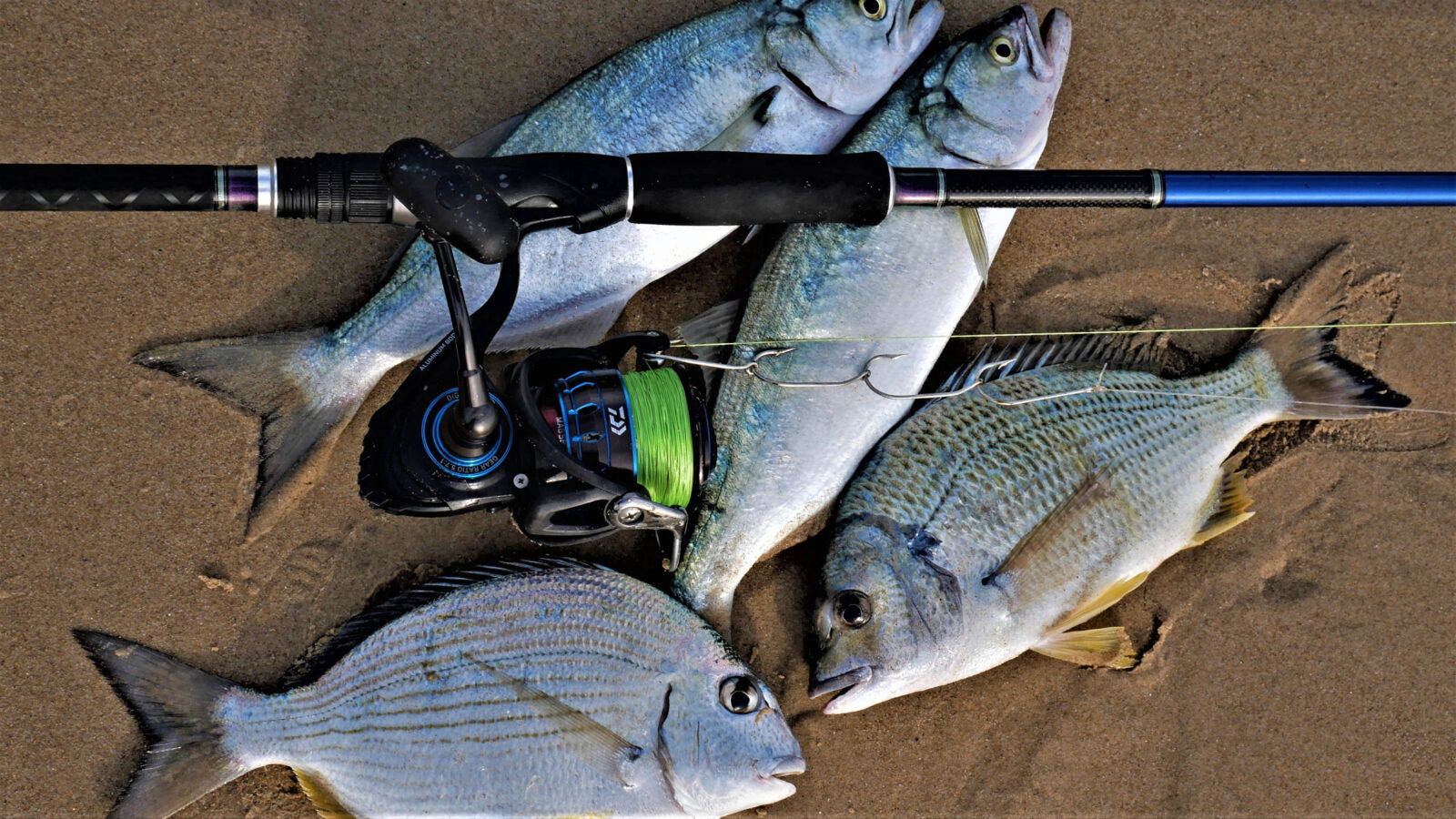
Tailor
Ganged hooks are taylor made for tailor fishing. Tailor are active predators that work in schools, revving each other into feeding frenzies when they find schools of baitfish. WA pilchards are a readily available bait and they are perfect for a gang of three and four 3/0 or 4/0 hooks. Because tailor feed with a chopping action, the idea is to slowly retrieve your bait when bites are felt, and the tailor with chop along the bait until they are hooked, so don’t strike until the rod bends over with the weight of a fish. Striking prematurely will pull the hooks out of open mouths!
Garfish are another great bait if you can get them at a reasonable price. They are much tougher than pilchards, more weighty (longer casts without a sinker) and have the added advantage of being more palatable to mulloway than pilchards. Not that pilchards being soft is a bad thing when chasing tailor; the pieces that fall away berley up more tailor. Which is why a group of anglers are more likely to turn on and hold tailor in place than a single angler – if you want to catch a few that is!
Rock fishos chase tailor from headlands using unweighted baits and a swivel 30 cm from the gang. Try in areas with a combination of at least a moderate amount of depth and white water (foam and bubbles left over from breaking waves). I’m not sure whether the tailor themselves hang in white water or, which might be in response to the white water providing refuge to hunted baitfish more than the tailor’s desire to be in it! You’ll learn to recognise tailor from the rapid staccato bite, bream from their gut-munching bite and mulloway from a heavy bite and pause. In time you’ll be able to respond accordingly but striking when the weight of a fish is felt is a good start.
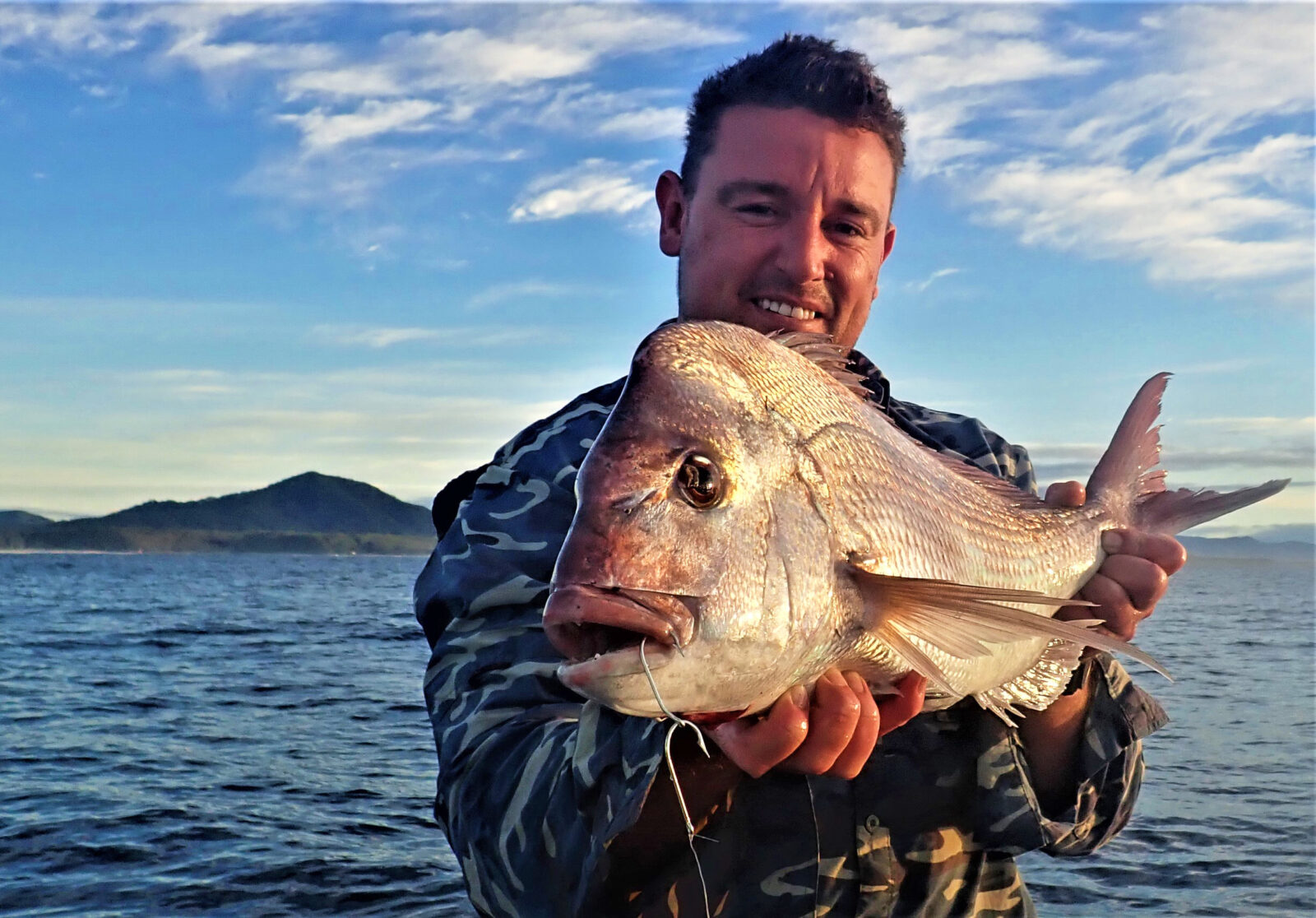
Snapper
Some anglers baitfish for snapper with gang hooks and they swear by them, but it’s not as popular as it could be. A twin hook gang is by far the most popular because of the sized baits deployed, mainly strips of mullet, slimy mackerel fillets and half-pilchards, with three-hook gangs used for whole pillie baits. Two × 4/0 hooks joined eye to shank is the least complex gang style, although one of my snapper-only friends joins two French style 540 hooks with a swivel. He uses a 3/0 for the top hook, slips a no. 9 swivel over the barb (flicking it back out if needed with a knife), then opening the eye of the 4/0 to slip through the other end of the swivel (closing with pliers after). French 540s for immediate use. When fishing shallow water in minimal current, the weight of the gang is result in the slow sink that snapper love, so they should be used without a sinker unless one is needed.
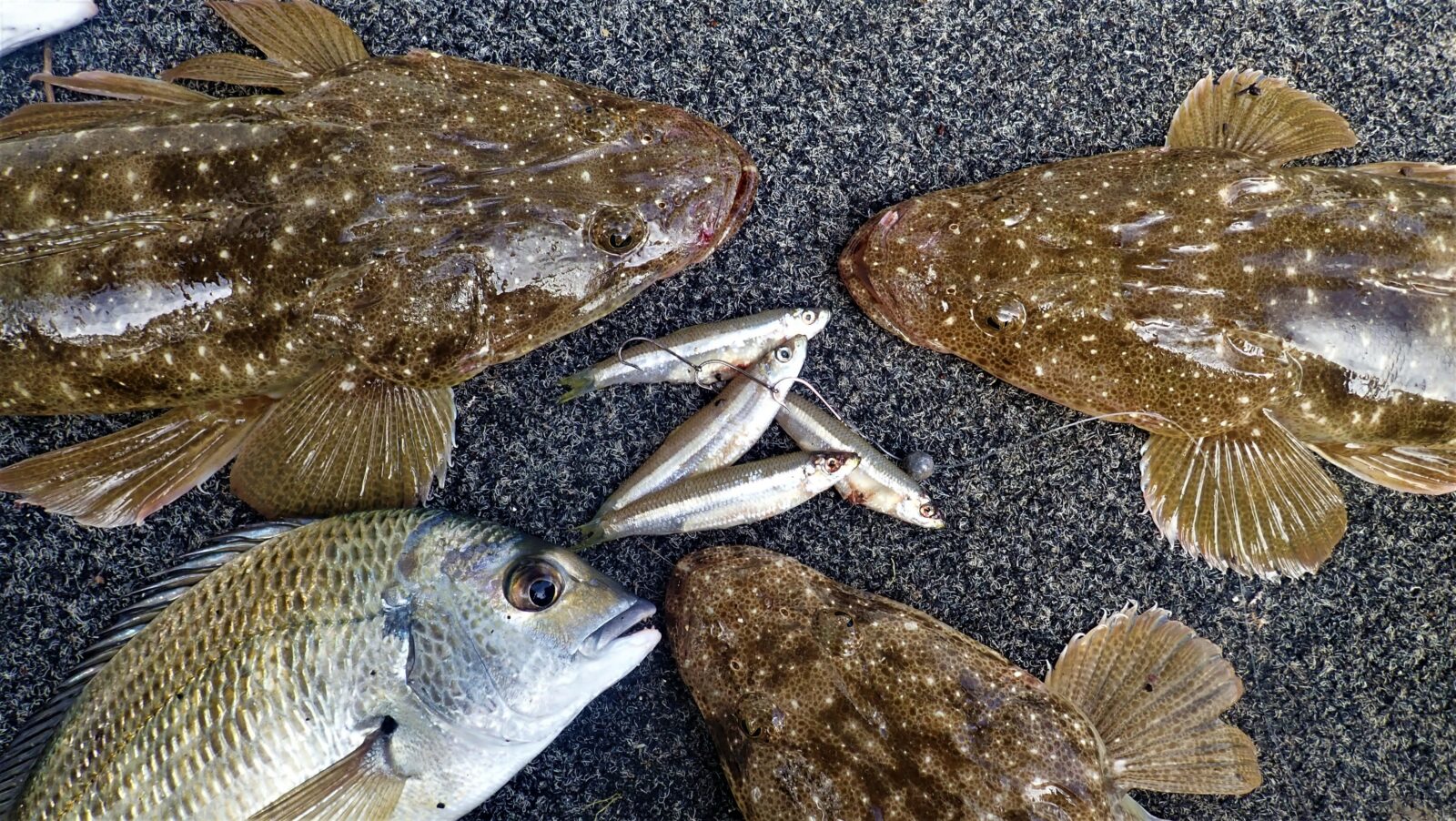
Bream
Whitebait, straight from the servo, are one of my favourite bream baits, particularly when I fish the ocean rocks and estuary rock walls. A gang of 3 × no.4 hooks are just the right length to put into a whitebait, covering the gut cavity, which is exactly where most bream bite. Flathead are also partial to whitebait, particularly on the drift, and the gang lessens the likelihood of being bitten off unless the whole bait is engulfed. Kumho produce ready-made gangs that fish really well. But be warned, the hooks are chemically sharpened and their fine wire pieces skin without a problem as I found out the first time I used them. We’d decided to drift alongside a training wall in the Bellinger River and I was on bait and de-hook duty. When the first fish came onboard I discovered that I’d left my pliers at home and no sooner had I mentioned the need for care than the bream flipped and I was looking at a new in and out piercing through the web of skin beside my thumb. Then the next fish was poled over the side and onto my leg … you guessed it; barb buried… a bloody morning that was. The moral being that gangs hook anglers as well as fish, so take extra care!
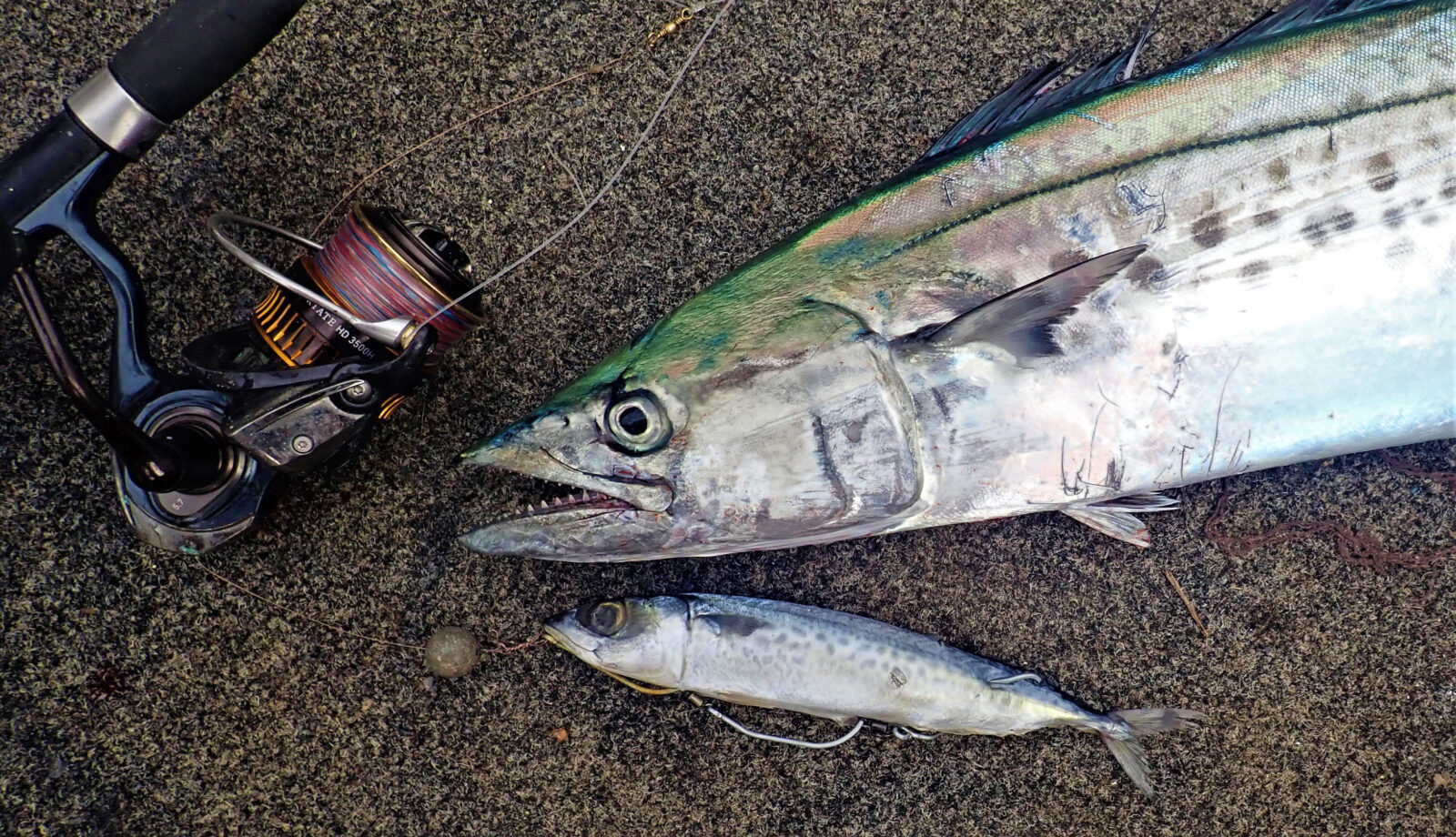
Mackerel
Whilst most mackerel fishing involves using live bait, there are some scenarios that lend themselves to the use of dead baits. The most obvious occurs when live baits are hard or impossible to catch, which was the case in northern NSW last season. I was fortunate to have frozen slimy mackerel prior to the mackerel season and did well on spotties by slow-trolling these baits on a gang of five × 5/0’s weighted with a chin weight. In addition, I target larger Spanish mackerel with whole dead bonito rigged on a chin rig with a gang of three × 10/0 s concealed inside the body of the bait by inserting a knife under the gill cover and pushing and cutting flesh along the spine. By pushing a piece of thick wire (with a small U-bend) in through the tail and out through the gills, the bottom hook of the gang can be placed into the bend and pulled down through the fish’s body, towards the tail, until the chin rig sits under the nose of the fish. It’s a deadly technique. Finally, I use dead baits when I know the water will be busy with other boats, such as over the Easter break. I believe that mackerel, particularly Spaniards, do not like boat noise and as they hold over predictable areas, getting first crack at them is important. So, instead of joining the throng in the search of livies, I’ll blast straight to the mackerel spot and get a pass or two with well-rigged dead baits before the crowd arrives. After which I’ll head back to the bait grounds for leftovers (or use dead baits on gangs if the livies have shut down) and fish where the bait are … boats have gone, it’s quiet and often worthwhile!
Rigging a bait correctly
Baits should be rigged straight to enhance casting. Straight baits cast further because they can be made to glide through the air whilst bent baits spin and fall short. Positioning the gang so the top hook passed through the eye of the bait minimises the chance of throwing a bait off the gang during the cast. Simply lay the gang beside the bait to get the top hook positioned and take note were the bottom hook lays at the tail end. Hook the gang from the bottom hook and then move to successive hooks (holding the gang perpendicular to the bait each time will make it easier). After a few goes, you won’t need to lay the gang out, baiting up will become second nature.












